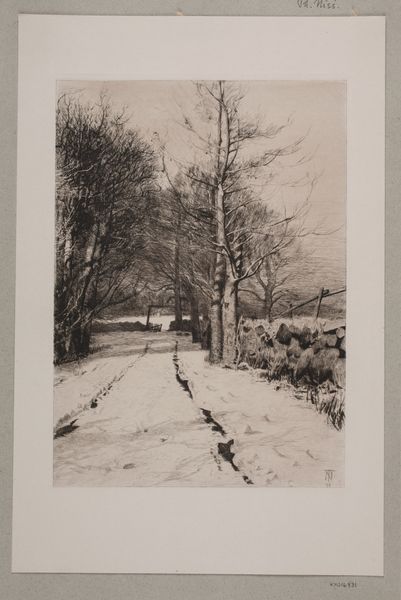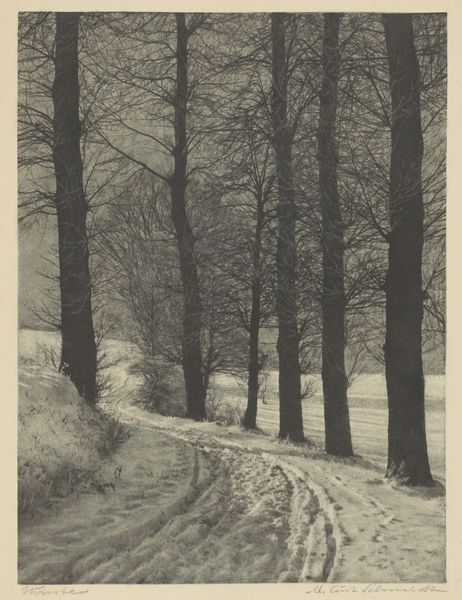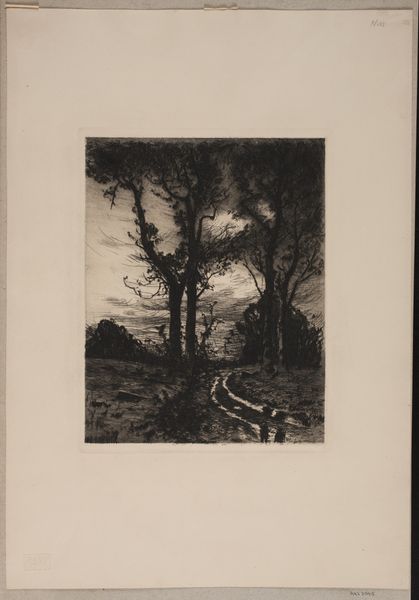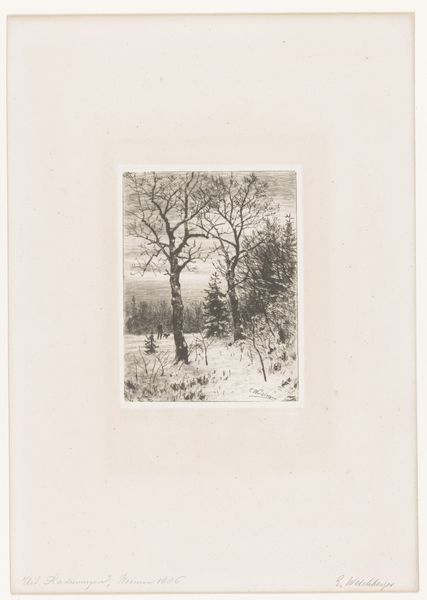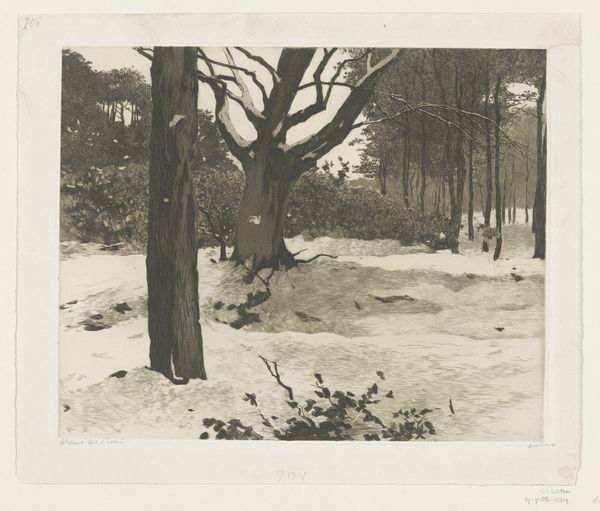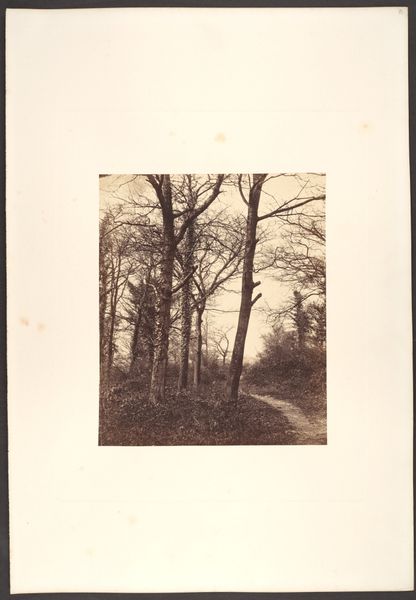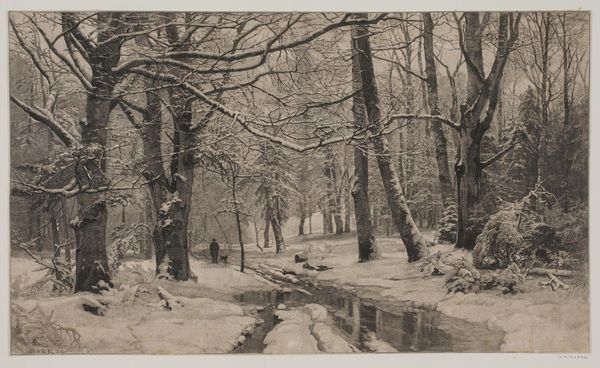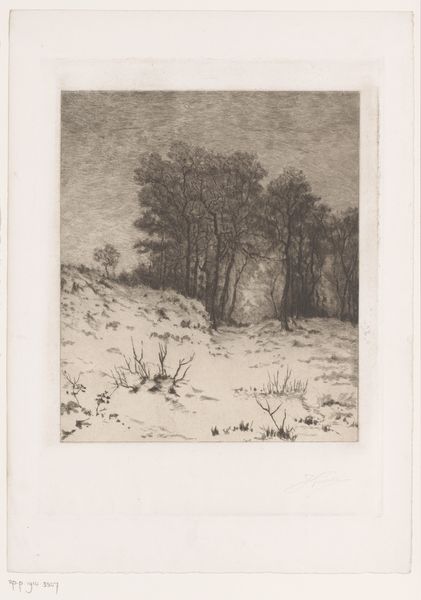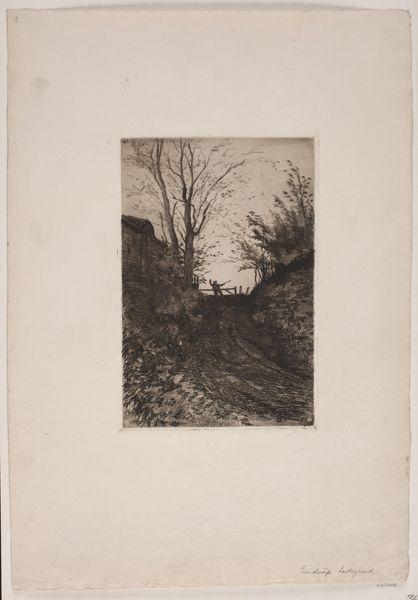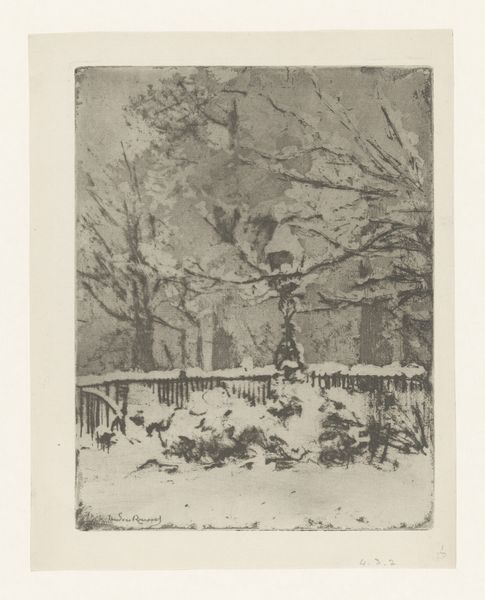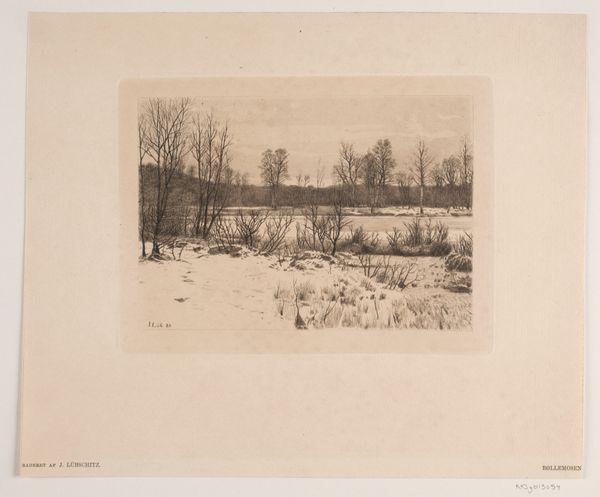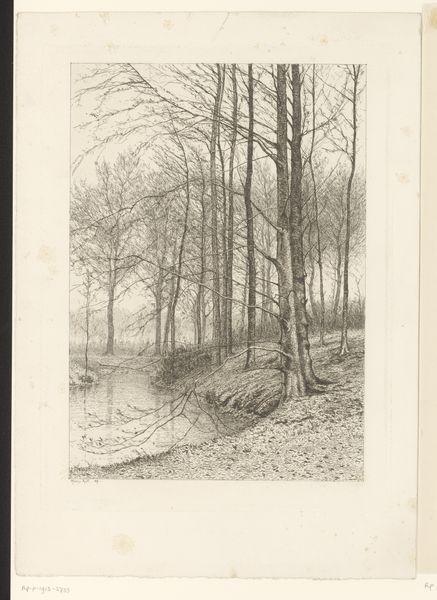
print, etching
# print
#
etching
#
landscape
#
realism
Dimensions: 325 mm (height) x 235 mm (width) (Plademål)
Editor: This is Thorvald Niss’s "Winter Landscape. By a Forest Fence," created in 1891. It's an etching, and it feels so stark and…still. There’s a path cutting through the snow. What do you see in this piece beyond the initial impression? Curator: Beyond the serene stillness, I see a powerful commentary on humanity's relationship with nature, particularly within a Danish context of that period. Think about the late 19th century; industrialization was rapidly transforming landscapes. How does this image speak to a yearning for a simpler, perhaps romanticized, past? Consider how the artist uses realism to portray the bleakness and also, possibly, the quiet resilience of the winter landscape. Editor: So, it's not just a pretty picture of the snow. It's about a changing world. The starkness…is that a commentary on something specific? Curator: I believe so. It can be read as a quiet critique of the encroaching modern world, a visual plea for the preservation of natural spaces and traditional ways of life. The stark contrast between the delicate etching lines and the barren landscape invites us to consider the societal pressures reshaping the environment and our connection to it. It makes one wonder: Who had access to appreciate and enjoy the landscape in the first place? Editor: It’s almost a political statement then. I hadn’t thought of it that way. The fence…is that a kind of division between the natural and cultivated worlds? Curator: Exactly! The fence symbolizes boundaries, ownership, and the separation of humanity from the wilderness. Who does the fence benefit and whose access does it restrict? The choice of a winter scene further amplifies the themes of scarcity, resilience, and the need for careful stewardship of resources. Editor: Wow, I see it so differently now! I initially just saw a pretty winter scene. Curator: Art often acts as a mirror, reflecting not just the world around us, but also the social and political undercurrents shaping it. It is about observing carefully and asking why this landscape appealed at the time, and how it still impacts our contemporary perceptions of landscape, ownership and access.
Comments
No comments
Be the first to comment and join the conversation on the ultimate creative platform.
